Nevertheless, I still think it’s helpful to have an understanding of the broader principles that form the basis of STV. So, the following is an explanation that works around the nitty-gritty math and calculations that can overwhelm those whom are unfamiliar with STV. It’s very much a simplification; but one that, hopefully, will better help you understand the underlying principles. So that you don’t just know what is happening but why as well.
So let’s go thru an example. Let’s say that we’re having an election, we’re voting for our "Favourite Three’s Company Character". Our four candidates, in no particular order, are:
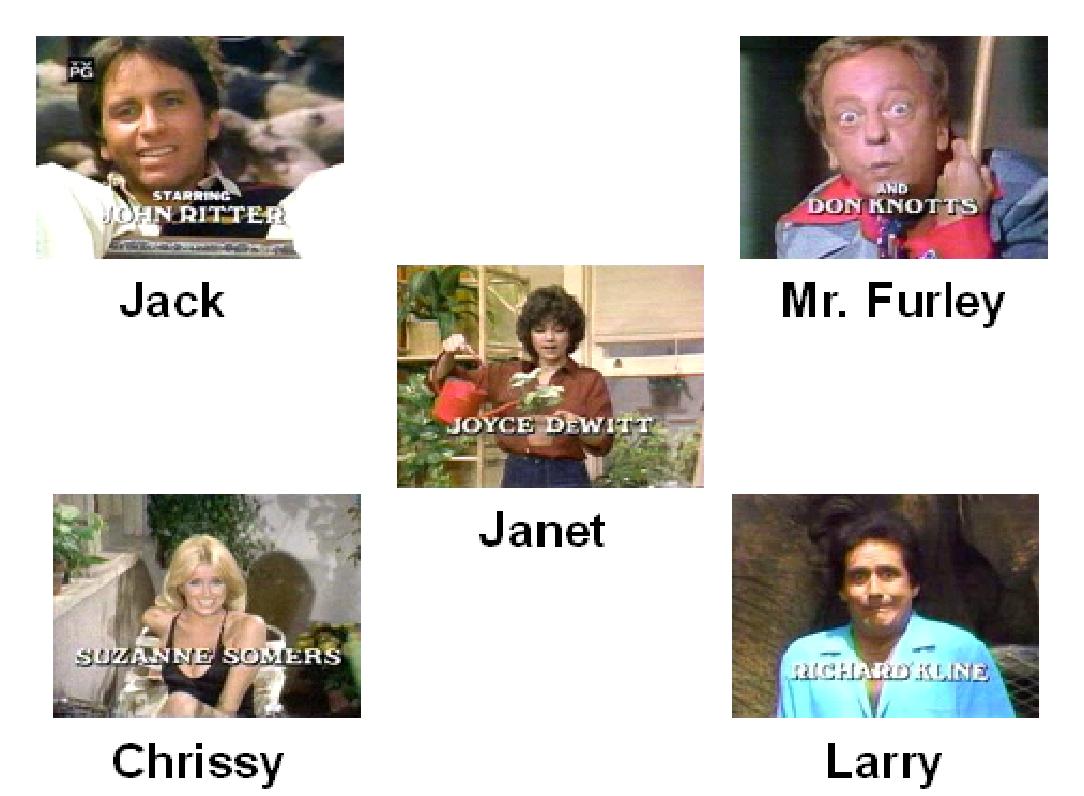
And a vote is taken giving us results of:
- Jack = 33%
- Mr. Furley = 25%
- Janet = 16%
- Chrissy = 19%
- Larry = 7%
Anyways, under our current system, Jack would be declared the winner outright, this despite the fact that 67% voted against him. He would win with a minority having benefited from opposition to his popularity being split amongst the other candidates.
One way of addressing this problem is by voting in rounds, called Run-off Voting. With Run-off Voting, you sequentially take a vote, eliminate the lowest vote getter if there is no winner, take a revote of the remaining candidates, and then repeat until someone wins a majority vote, which in this case is 50% + 1. Let’s see how that would work.
So entering the second round of voting, Larry would be the first to go, having only garnered 7% of the vote. Now, in a revote, the people who originally voted for the remaining four candidates (Jack, Janet, Mr. Furley and Chrissy) wouldn’t be changing their vote; their candidates are still in it. It’d only be Larry’s voters who would have to make a switch. So what we’re really doing is simply taking Larry’s votes and redistributing them amongst the other four candidates: in other words, Larry’s voters are now going to have to vote for their second choice candidates.
And let’s say in the second round that about half of them vote for Jack and the other half vote for Mr. Furley, just to make it easy.
Second Round Results
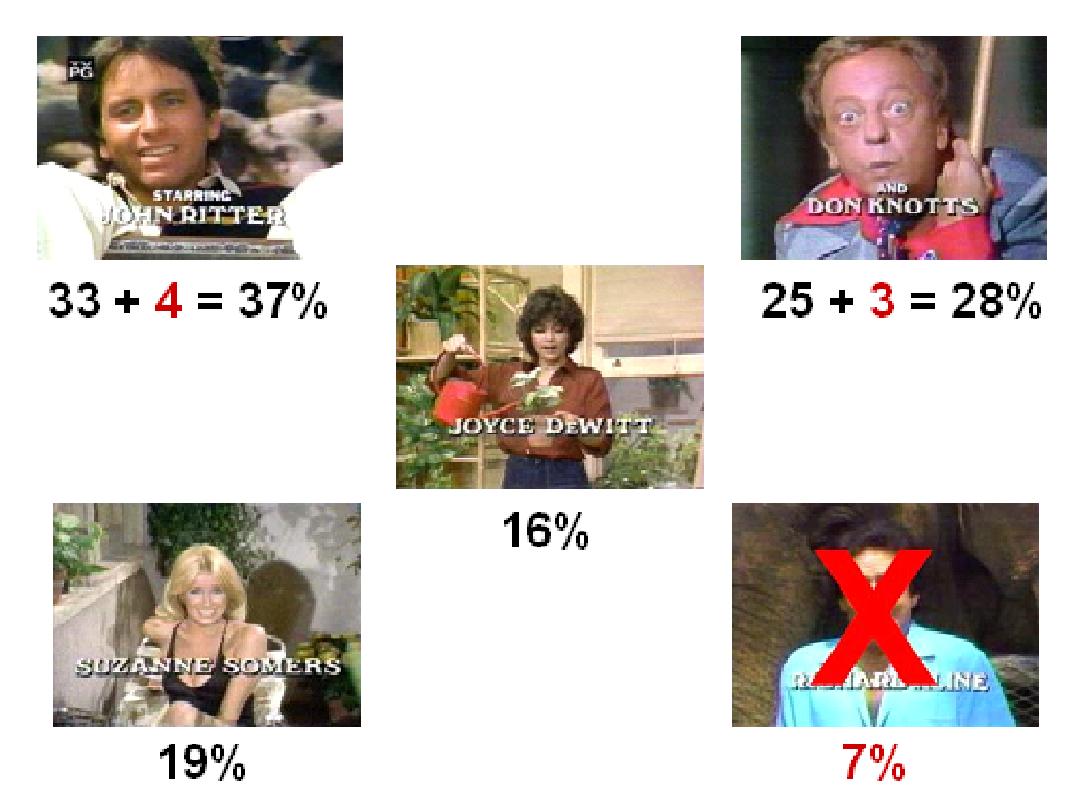
Third Round Results
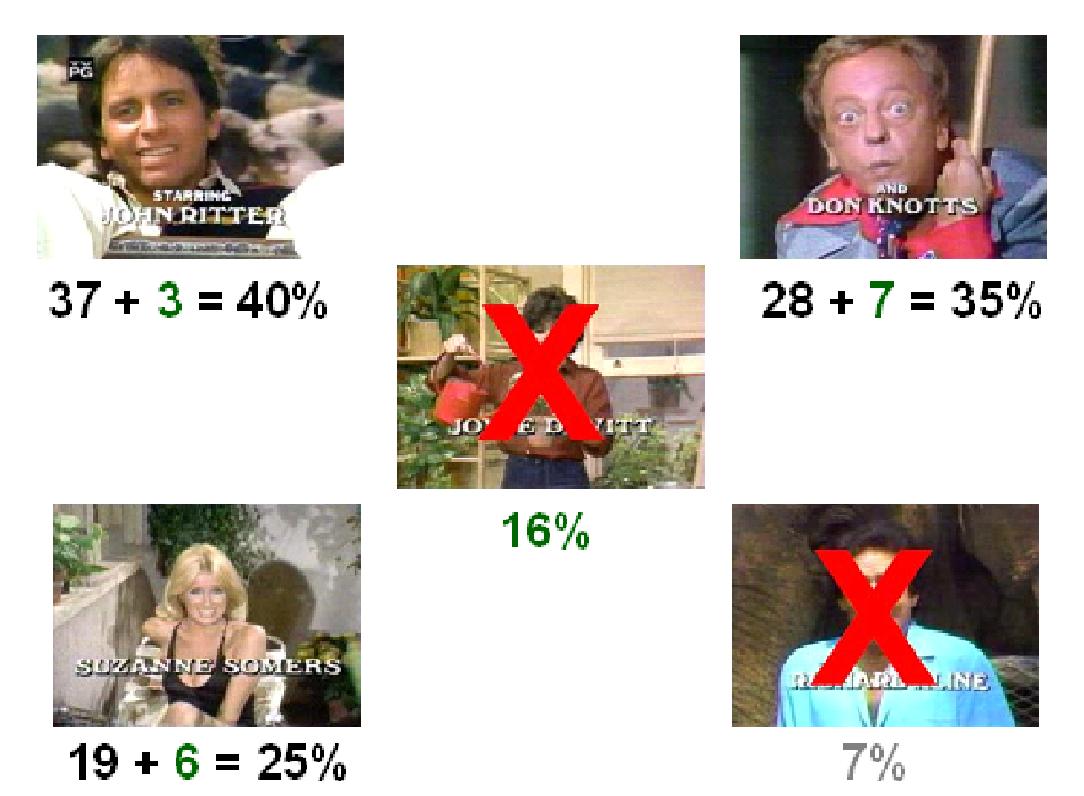
Ooo… Jack’s got to watch his back.
Ok, one last round and…
Final Round Results
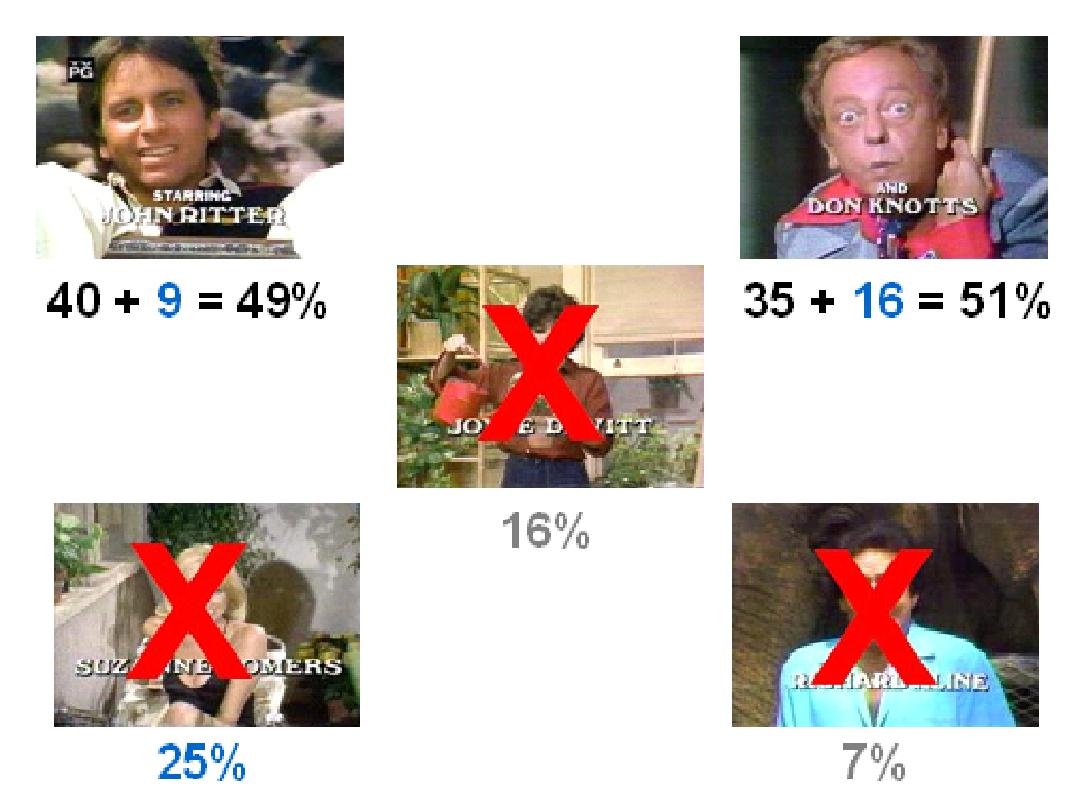
What Run-off voting does is ensure that a winning candidate does so with a majority vote, more accurately reflecting voter preferences. The only problem with this is that it’s very time consuming as it requires voters to make multiple trips to the voting booth along with the necessity of recounting votes every round.
STV does the same thing as Run-off voting and even improves on it in that you get the benefits of voting in rounds without the need to go back and forth to the voting booth. This is achieved in the way the ballot is set up:

This is what the ballot would look like in this particular election. You’d have all the candidates listed as before, except instead of marking an X by your candidate of choice, you would simply rank the candidates from you first choice to your last choice.
That’s it. It’s that easy.
What you’re saying by your ranking is “if my first choice gets eliminated, this is who I would vote for next”. So instead of having to make multiple trips to the voting booth, you only have to make one. You can rank some of the choices, as above…
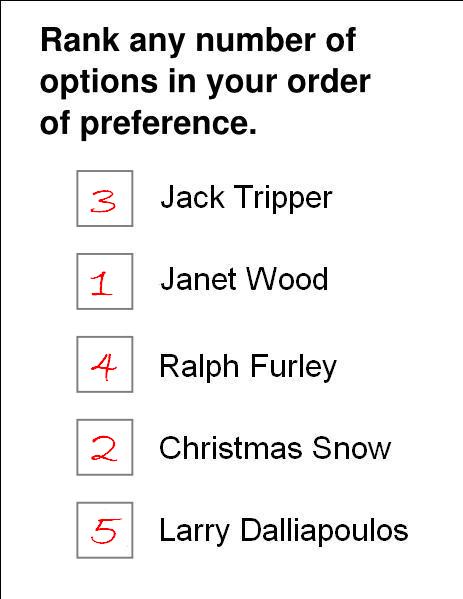 … you can rank all of the choices…
… you can rank all of the choices……or you can rank just one.
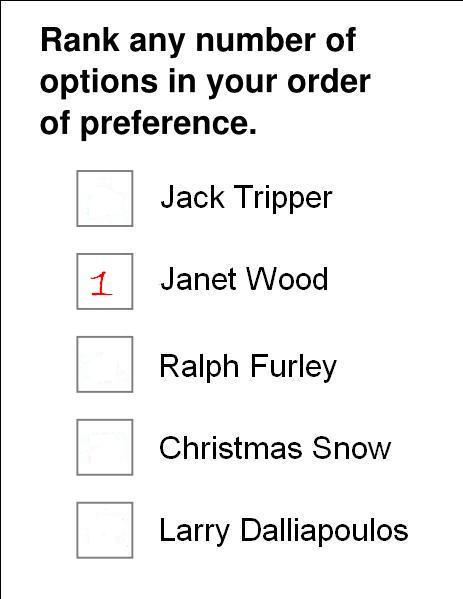
The choice is entirely yours.
But there’s more. Part of the citizen’s assembly’s proposal involves combining ridings, so that instead of having one MLA per riding, you’d have multiple MLA’s, two MLA’s or more, per riding so that you’d be voting to elect more than one candidate at a time.

So how would that change things? Not by much. Let’s go back to our previous example but instead of voting for one “Favourite Three’s Company Character”, we’re now voting for two “Favourite Three’s Company Characters” simultaneously. We’d have our first round voting results as before (Jack 33%, Janet 16%, Mr. Furley 25%, Chrissy 19% and Larry 7%) and, as before, we still don’t have a winner with a majority vote.
(Incidentally, the number of votes needed to win in this case, or any case where you are voting to elect more than one position simultaneously, would not be 50% + 1 because it’s mathematically impossible for two people to get 50% + 1 at the same time. In this particular case, with two positions being elected, a majority would be 33.3% + 1. There are calculations to figure that out; but you don’t need to worry about them right now, I’ll discuss them in a future blog post).
As with the first election, we’ll eliminate Larry, take a revote…
FTCC Part Deux: Second Round Results
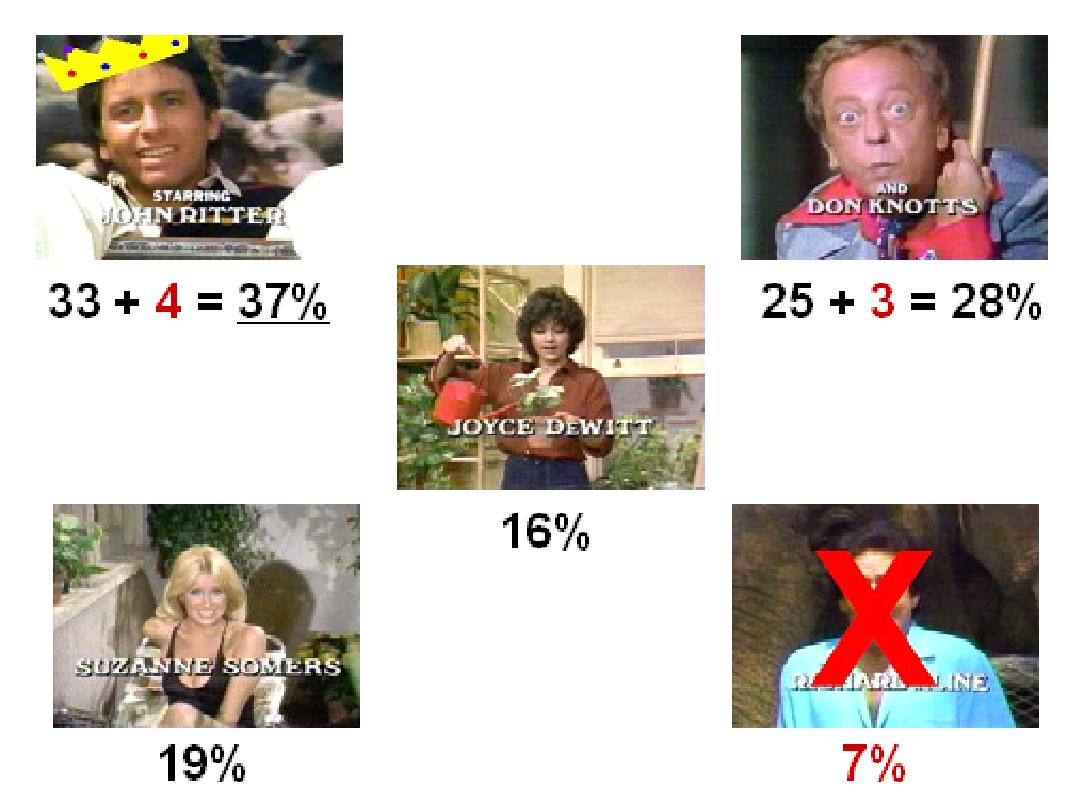
and find that Jack now has enough votes to take the first of the two “Favourite Three’s Company Character” crowns that are up for grabs. Congratulations to Jack.
Great, we have one winner; we need another. So we’ll move on to the next round and as before, we’re redistributing votes. Except this time this time, instead of redistributing the votes on an eliminated candidate, we’re now redistributing the votes of candidate who has just been elected. (Also, because we’re now back to voting for one available position, the number of votes required to win will again be 50% + 1).
FTCC Part Deux: Final Round Results
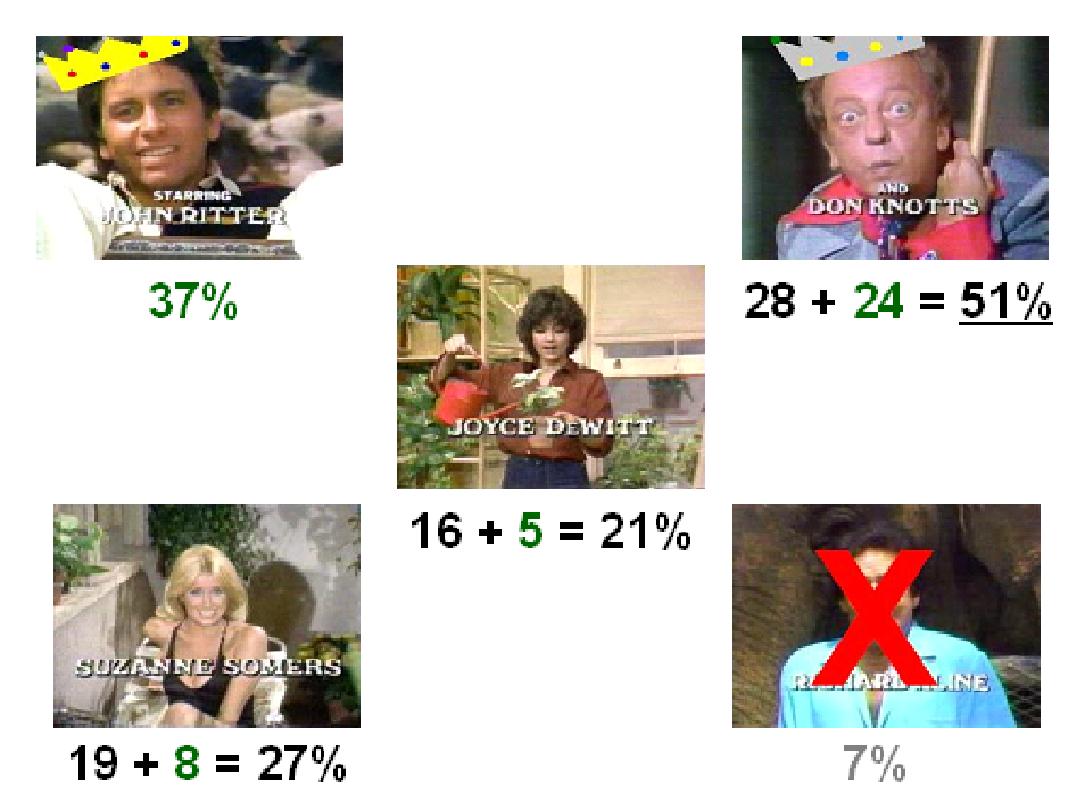
And we find that a large majority of Jack’s voters, making their second or third choice, went to Mr. Furley giving him the second title (gee, fixing elections is kind of fun). Congratulations to Mr. Furley.
Again, the ballot itself remains unchanged; you’re ranking your choices as before. That's all you have to do. Except this time not only are you indicating “If my 1st choice is eliminated, this is who I would vote for next", you’re also saying, “If my first choice is elected, and there are still other positions to be filled, this is who I would vote for next”. Again, you can rank some of the candidates, all of them, or you can rank just one. The choice is entirely yours.
Now this may seem like a lot of work to vote in an election and it is; but not for you the voter. The only thing that changes for you is that you’re writing numbers down by a few names (or one, if you choose) instead of one X by one name. Then you can just walk away; the rest of the work is then taken care of by the counters.
But by just making this minor adjustment in the way that we vote, we can have a significant impact in results of future elections. Results that are fairer and a more accurate reflection of the desires of voters. Don’t you think it’s worth it?